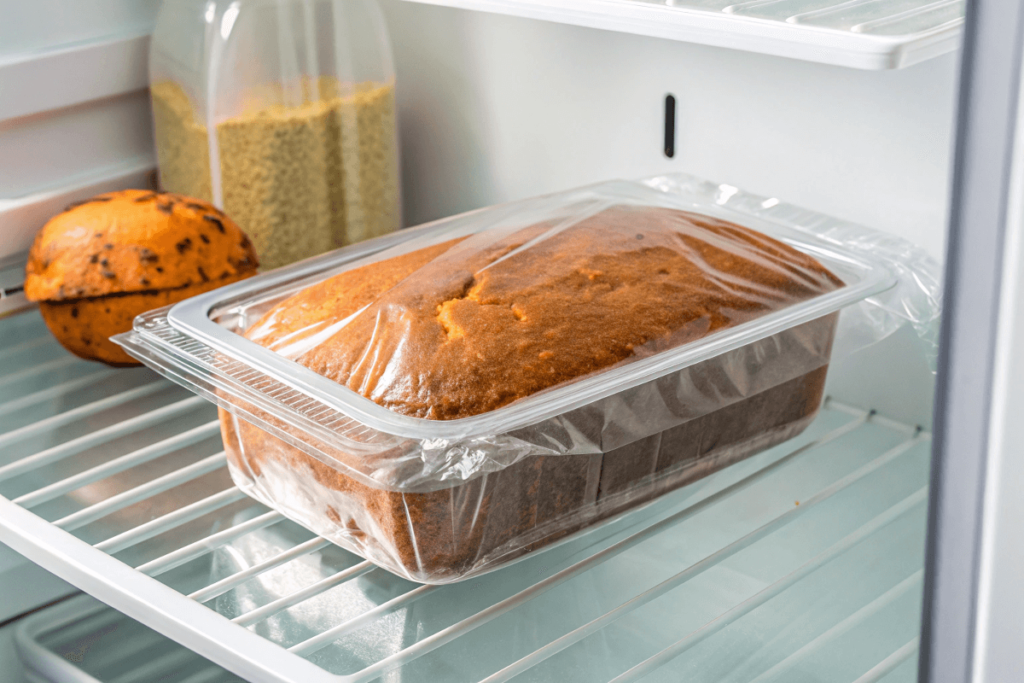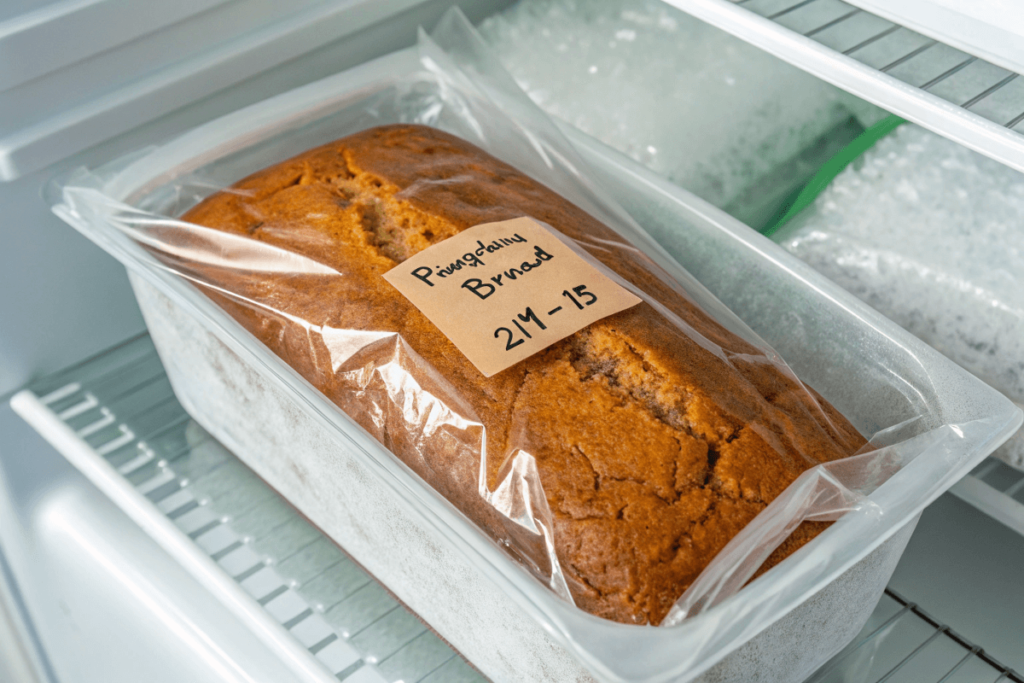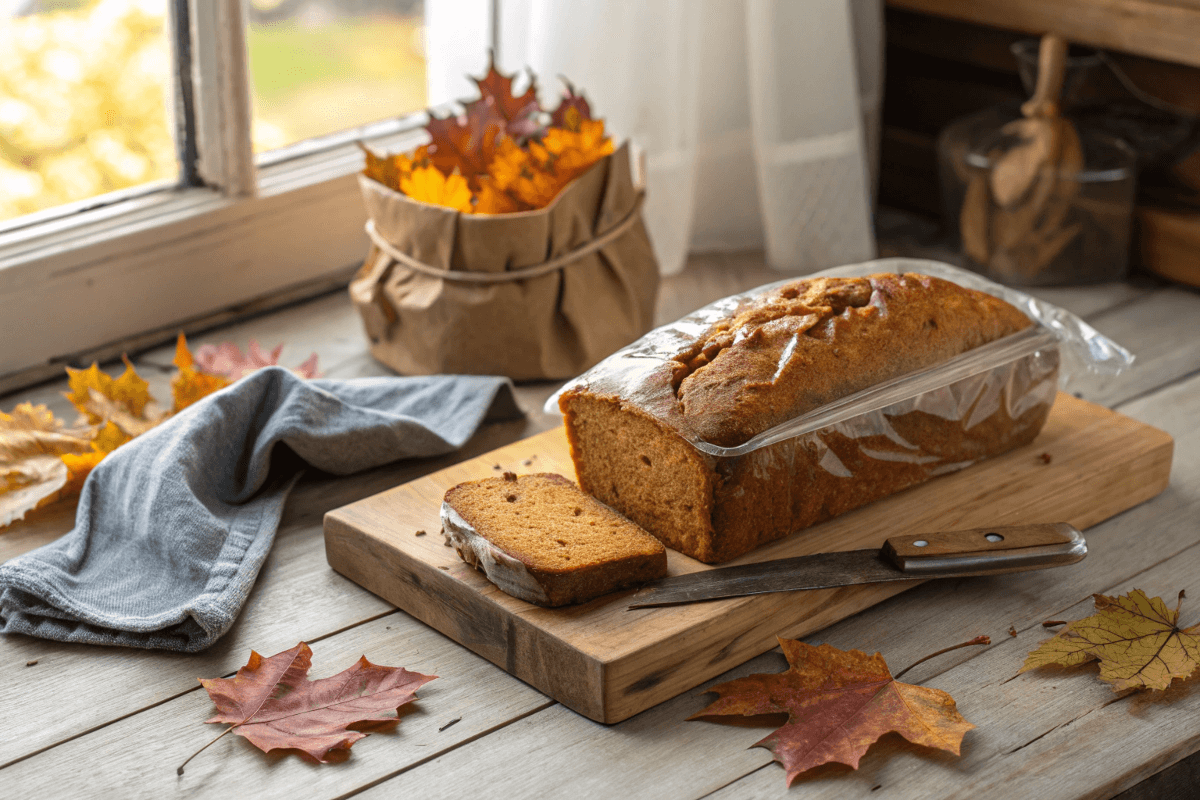Pumpkin bread is a beloved treat, perfect for fall or any time you crave something moist, flavorful, and comforting. But storing this sweet bread can be tricky—it’s easy for it to turn soggy or, worse, dry out entirely. If you’re wondering how to store pumpkin bread so it doesn’t get soggy, you’re not alone! This article covers the essential tips and techniques to maintain your pumpkin bread’s texture and flavor, whether you’re saving it for a day or a month. From proper cooling to expert freezing methods, you’ll discover foolproof ways to keep your pumpkin bread fresh and delicious. Let’s dive in!
Why Proper Storage Matters
The Impact of Storage on Bread Texture
Proper storage plays a critical role in maintaining the ideal texture of pumpkin bread. When stored incorrectly, pumpkin bread can become overly moist, leaving an undesirable sticky or soggy feel. On the flip side, poor storage can lead to a dry and crumbly loaf, robbing you of that soft, moist crumb we all love. Moisture levels are key—too much or too little, and your bread’s texture suffers.
Risks of Soggy or Dried-Out Pumpkin Bread
When pumpkin bread retains too much moisture, it’s not just a matter of sogginess—it can lead to faster spoilage, mold growth, and an unpleasant mouthfeel. On the other hand, if the bread loses too much moisture, it turns stale and loses its signature rich taste. Improperly stored bread can also absorb odors from the environment, especially in the fridge, compromising its flavor.
To enjoy the perfect slice every time, understanding the impact of storage is crucial. It ensures your pumpkin bread stays as fresh and tasty as the day you baked or bought it. By following the storage practices detailed in this guide, you’ll avoid these common pitfalls and keep your bread moist, fresh, and irresistible.
Stay tuned for the next section, where we’ll discuss how to prepare your pumpkin bread before storing it!
Preparation Before Storing
Let the Bread Cool Completely
Before you even think about wrapping up your pumpkin bread, let it cool completely. Fresh out of the oven, your bread is still releasing steam, and wrapping it too soon traps that moisture, leading to a soggy crust. To prevent this, allow your bread to rest on a wire rack for at least an hour. This step ensures that any excess heat or steam escapes, leaving your loaf ready for storage.
Choosing the Right Wrapping Materials
Once your pumpkin bread has cooled, selecting the right wrapping material is key to maintaining its texture. Plastic wrap is a top choice for short-term storage as it seals in moisture while keeping air out. For longer storage, consider wrapping the loaf in beeswax or aluminum foil to provide extra protection. Wrapping tightly also prevents your bread from absorbing odors or losing its moist crumb.
For more ideas on how to store baked goods properly, check out the Pumpkin Banana Loaf guide for similar tips.
Storing at Room Temperature
Best Practices for Short-Term Storage
Storing your pumpkin bread at room temperature works best for short periods, typically 2–3 days. To keep it fresh, wrap the bread snugly in plastic wrap, ensuring no air gets in. Then, place it in an airtight container or resealable bag. Store it in a cool, dry spot, away from direct sunlight or heat sources, which could dry out your bread prematurely.
How to Maintain Freshness for 2–3 Days
To ensure your pumpkin bread stays moist but not soggy, unwrap it briefly each day to let excess moisture escape. This simple trick prevents the dreaded sticky crust. For individual slices, wrap each piece separately and store in the same airtight container. This way, you can enjoy a fresh slice without exposing the entire loaf to air.
Pro tip: If your room temperature environment is humid, consider placing a paper towel inside the container to absorb any extra moisture. For another approach to maintaining freshness, read about the common mistakes people make with banana bread.
By following these storage techniques, you’ll be sure your pumpkin bread retains its soft, delicious texture without becoming soggy or dry. Up next: how to safely refrigerate your bread for longer storage!
Storing in the Refrigerator

Advantages and Disadvantages of Refrigeration
Refrigerating pumpkin bread can extend its shelf life to 4–5 days, but it comes with some caveats. The cool temperature slows bacterial growth, keeping your bread safe to eat for longer. However, refrigeration can also cause the bread to dry out if not stored properly. On the plus side, it’s a great option when you don’t plan to finish the loaf within a couple of days.
On the downside, refrigeration can alter the texture slightly, making the bread less tender. To prevent this, you’ll need to store it carefully to lock in moisture.
Preventing Moisture Loss in the Fridge
To keep your pumpkin bread moist in the fridge, start by wrapping it tightly in plastic wrap or beeswax. Then, place the wrapped loaf in an airtight container to double up on protection. This prevents the bread from drying out or absorbing unwanted odors.
If you plan to enjoy the bread over several days, slice it beforehand and wrap each piece separately. This method makes it easy to grab a slice while keeping the rest of the loaf fresh. Remember, when reheating, a quick zap in the microwave with a damp paper towel can help revive its softness.
For more storage tips, consider exploring our Pumpkin Sourdough Bread Recipe, which includes helpful advice on preserving freshness.
Freezing Pumpkin Bread for Long-Term Storage
Step-by-Step Guide to Freezing Pumpkin Bread
Freezing is one of the best ways to store pumpkin bread for long-term use without compromising its texture. First, ensure the bread is completely cooled. Wrap the entire loaf or individual slices tightly in plastic wrap, making sure no part of the bread is exposed. Next, add a layer of aluminum foil to protect against freezer burn. Finally, place the wrapped bread in a resealable freezer bag, removing as much air as possible before sealing.
Label the bag with the date to keep track of how long it’s been frozen. Pumpkin bread can stay fresh in the freezer for up to three months when stored properly.

Proper Thawing Techniques to Avoid Sogginess
When it’s time to enjoy your frozen pumpkin bread, thawing it correctly is crucial to avoid sogginess. Remove the bread from the freezer and let it sit at room temperature, still wrapped, for a few hours. Keeping it wrapped during the thawing process helps the bread reabsorb any moisture it may have lost.
For a faster option, you can warm up individual slices in the microwave or toaster. Just remember to keep an eye on the heat to avoid over-drying. If you want to try a different bread recipe while waiting for your pumpkin bread to thaw, check out our Chocolate Chip Pumpkin Bread.
Freezing pumpkin bread allows you to enjoy its soft, moist crumb for months, so don’t hesitate to bake extra loaves! In the next section, we’ll explore common mistakes to avoid when storing your pumpkin bread.
Part 6: Common Mistakes to Avoid (250 words)
Storing Bread Before It’s Cooled
One of the most common mistakes when learning how to store pumpkin bread so it doesn’t get soggy is wrapping it too soon. Freshly baked bread releases steam, and trapping that moisture inside the wrap will lead to a sticky, soggy crust. Always let your bread cool completely on a wire rack before storing it to avoid this issue.
Using Improper Wrapping Techniques
Another frequent error is using the wrong wrapping materials or not sealing the bread properly. Loose wrapping allows air to circulate, causing the bread to dry out quickly. On the flip side, over-wrapping without ventilation can lead to condensation buildup, making the bread damp.
To strike the right balance, use plastic wrap or beeswax for short-term storage and double-wrap with aluminum foil for freezing. Proper wrapping ensures your pumpkin bread stays moist and flavorful without becoming soggy.
By steering clear of these mistakes, you’ll keep your bread fresh and enjoyable for days or even weeks.
Expert Tips for Moist and Fresh Pumpkin Bread
Using Desiccant Packs for Long-Term Storage
Here’s a pro tip: consider placing a small food-safe desiccant pack in your airtight container to absorb excess moisture. This trick helps maintain the ideal balance of moisture, ensuring your pumpkin bread stays fresh and moist without getting soggy.
How to Reheat Bread Without Making It Soggy
When reheating pumpkin bread, it’s easy to overdo it, leaving the bread dry or rubbery. To avoid this, wrap a slice in a damp paper towel and microwave it for 10–15 seconds. This simple step helps revive the bread’s softness and moisture. Alternatively, you can warm it in the oven at a low temperature for a few minutes.
These expert tips can take your storage game to the next level. Whether you’re enjoying your pumpkin bread a day later or after weeks in the freezer, you’ll savor its fresh, moist crumb every time. Curious about other pumpkin recipes? Don’t miss our guide to Pumpkin Sourdough Bread for more inspiration!
FAQs
How Long Can Pumpkin Bread Stay Fresh?
If stored properly, pumpkin bread can stay fresh at room temperature for 2–3 days. For longer storage, refrigerating the bread extends its freshness to 4–5 days, while freezing can preserve it for up to three months. By following the methods outlined in this article, especially for how to store pumpkin bread so it doesn’t get soggy, you can enjoy it for weeks.
Can I Store Pumpkin Bread Without Wrapping It?
Technically, you can store pumpkin bread without wrapping, but it’s not ideal. Exposed bread dries out quickly, losing its soft texture and rich flavor. For best results, always wrap your bread tightly in plastic wrap or beeswax before storing it in an airtight container. Keeping it properly wrapped is essential for learning how to store pumpkin bread so it doesn’t get soggy.
What’s the Best Way to Store Pumpkin Bread Muffins?
Pumpkin bread muffins require similar care as a full loaf. Let them cool completely, then wrap each muffin in plastic wrap to retain moisture. Store the wrapped muffins in an airtight container at room temperature for a few days or freeze them for long-term storage.
Can You Freeze Pumpkin Bread Batter Instead of the Loaf?
Yes, you can freeze pumpkin bread batter! Simply pour the batter into a freezer-safe bag or container, removing as much air as possible. When you’re ready to bake, thaw the batter in the refrigerator overnight, and bake as usual. This is a great way to save time while enjoying freshly baked bread anytime.
Conclusion and Final Thoughts
Storing pumpkin bread the right way ensures you’ll always enjoy its soft, moist crumb and rich flavor. Whether you’re keeping it for a day, a week, or even longer, proper storage techniques prevent your bread from getting soggy or stale. From letting the bread cool completely to wrapping it tightly and choosing the right storage method, every step matters.
Now that you know how to store pumpkin bread so it doesn’t get soggy, you can confidently bake extra loaves and preserve them for later. Remember, if you want long-term storage, freezing is your best bet, while room temperature works well for short-term enjoyment.
For more tips and delicious recipes, don’t forget to explore our guide on Chocolate Chip Pumpkin Bread. Happy baking!

